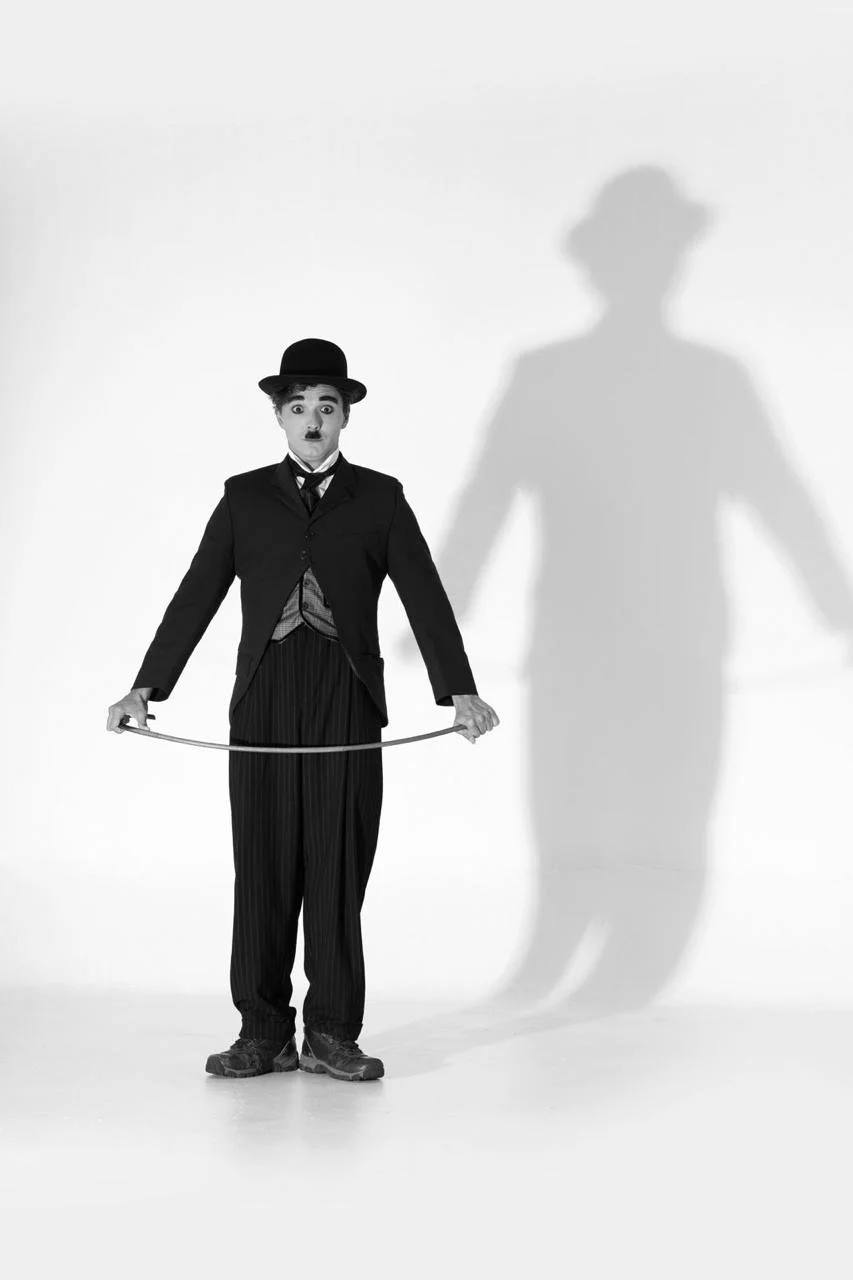The Tramp: A Theatrical Journey Through Chaplin's Light and Shadow
The Tramp
Daniel Anderson's stunning one-man cabaret doesn't just resurrect Charlie Chaplin - it excavates the heartbreaking human cost behind the world's most beloved silent clown.
For a long time I’ve been obsessed with stories that are told not through grand spectacle, but through the intimate vulnerability of a single performer and a piano. Amanda Bothma's The Tramp, starring Daniel Anderson, is a masterclass in how this sort of cabaret theatre can illuminate the complex shadows behind an iconic figure we thought we knew.
I've always known Charlie Chaplin as the king of silent films, the originator of slapstick comedy, and the early incarnation of what would later become Mr Bean. What I was unaware of, however, was how his reputation transformed from the beloved fool whose face could be recognized everywhere to a pariah, exiled from his country in the midst of allegations of communism, fascism, and womanizing. The Tramp excavates the human cost of genius, the price of fame, and the haunting persistence of our discarded selves.
Chaplin's career spanned the evolution of cinema itself. He began performing as a child in London's music halls, eventually joining the Karno comedy troupe that brought him to America in 1910. By 1914, he had created the Tramp character that would make him the most recognizable face on Earth. His bowler hat, cane, and distinctive waddle became a universal language of humour that transcended cultural barriers. Yet behind this beloved figure lay a man whose personal life would eventually overshadow his artistic achievements, culminating in his exile from America during the McCarthy era.
This is Daniel Anderson's show, and he waltzes through this fascinating history with remarkable skill, blending comedy and tragedy as we delve into the complex character that was Chaplin. Anderson doesn't merely impersonate; he inhabits multiple worlds simultaneously. Many times during the show I had to pinch myself and remember that Charlie Chaplin never actually spoke (let alone sang) in his films because these cabaret performances were so seamlessly integrated into his character. Anderson's voice carries both the pathos of the Little Tramp and the weight of the man who created him, making the transition from silent comedy to musical theatre feel not just natural, but inevitable.
The musical landscape, crafted by Paul Ferreira on piano, was nothing short of magnificent. Each song was tastefully chosen to accompany different chapters of Chaplin's story, creating a sonic tapestry that moved effortlessly from ragtime to classical to contemporary. Ferreira's accompaniment wasn't merely supportive - it was conversational, responding to Anderson's performance with the intuitive understanding that only comes from true musical partnership. The song list itself reads like a journey through the 20th century, from "Pineapple Rag" through "Smile" (Chaplin's own composition) to "99 Red Balloons," each piece carefully selected to illuminate different facets of the story.
Wilhelm Disbergen's design choices elevated the production beyond mere performance into the realm of visual poetry. The black and white screens built into the set provided perfect contrast for the red curtain and red balloons that showed the light at the end of the tunnel for this tragi-comedy lifestory. These design elements weren't decorative flourishes but integral storytelling devices that reminded us of cinema's silent era while anchoring us firmly in the live theatrical moment.
My favourite scene was the courtroom sequence, where Anderson expertly jumped between characters, accents, positions, and energy levels to demonstrate that one-person shows don't have to be one-dimensional. The entire audience shifted further and further forward in their seats as the energy rose, and it really set the tone for the final act of the piece. Here, Anderson embodied not just Chaplin but the entire machinery of justice, media, and public opinion that ultimately crushed him. It was theatre at its most essential - one performer, one space, infinite possibilities.
What struck me most profoundly was how Bothma's script and Anderson's performance captured something essential about the relationship between artist and art. The Tramp, as presented here, becomes more than Chaplin's most famous creation - he becomes the keeper of everything pure and vulnerable that the man himself was forced to abandon. In a world that demanded explanations, political positions, and moral certainties, the Tramp remained beautifully, stubbornly silent, carrying the world's laughter on his shoulders even as his creator faced exile and disgrace.
The Tramp is theatre that reminds us why live performance matters. In an age of digital everything, there's something irreplaceable about sharing space with a story, about watching an artist transform before your eyes, about feeling the collective intake of breath from an audience moved by something beautiful and true. This production doesn't just entertain—it excavates, it honours, and it ultimately heals.
All in all, it was a fantastic show and one well worth watching. I thoroughly enjoyed it, but more than that, I was moved by it. In just over an hour, Anderson and his collaborators created something that will stay with me long after the final bow. Sometimes the most important stories are the ones we think we already know, waiting to be discovered all over again.
The Tramp runs until 27 July 2025 at Theatre on the Square. Get your tickets here.
